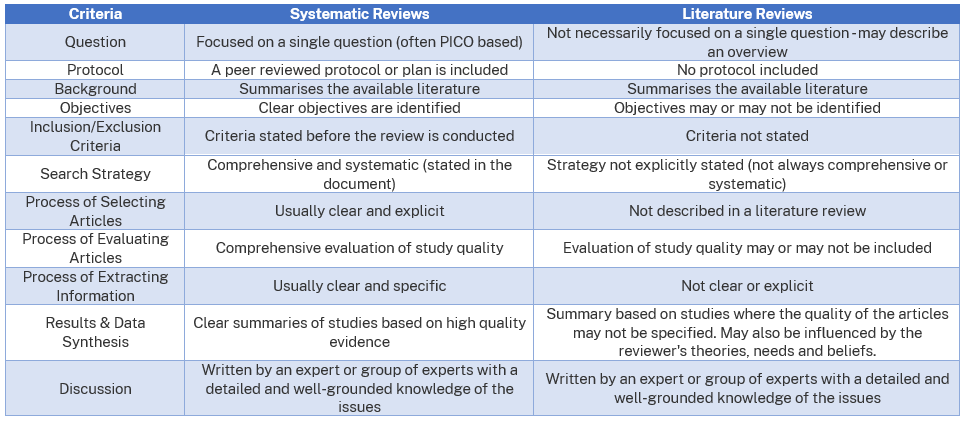Systematic review
A systematic review is an authoritative account of the existing evidence using reliable, objective, thorough and reproducible research practices.
It is a method of making sense of large bodies of information and assists in determining what works and what doesn’t in healthcare.
Systematic reviews identify areas of uncertainty and where little or no relevant research has been done and where new studies might be needed.
It’s a good idea to familiarise yourself with the systematic review process before beginning your review. You can do this by searching for other systematic reviews to look at as examples and by learning how to distinguish between types of reviews.
What are systematic reviews? (Cochrane video)
Other review types
Sutton, A., Clowes, M., Preston, L. and Booth, A. (2019), Meeting the review family: exploring review types and associated information retrieval requirements. Health Info Libr J, 36: 202-222. https://doi.org/10.1111/hir.12276
Systematic review types: meet the family (Covidence)
Literature review
A literature review summarises, interprets, and critically evaluates the literature to establish current knowledge of a subject.
Both review types synthesise evidence and provide a summary of information. The key difference lies in the methodology. Systematic review methods are transparent and reproducible, designed to minimise bias. Unlike systematic reviews, the methods are generally not predefined and are not described in detail in the review. The search may be comprehensive but is not designed to be exhaustive.
How does a Systematic Review differ from a literature review?

Systematic Review Course (HETI)
Request a synthesis review
Request a literature search